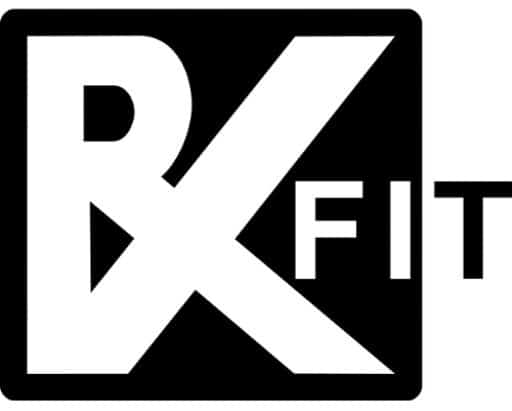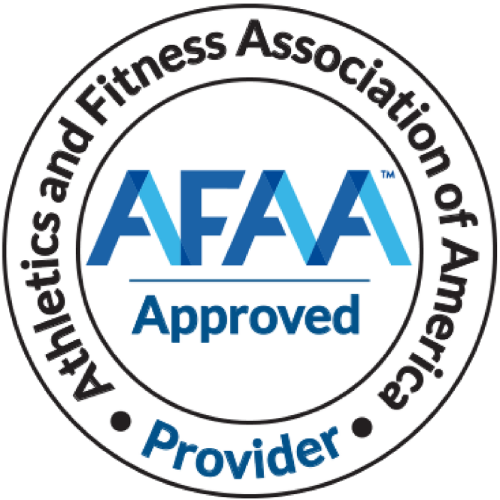Squatting is a great way to build strength and tone your muscles, but if you have shoulder pain or an injury it can be difficult to do the exercise safely. Squats involve pushing your body weight through your arms, so any shoulder issues could make this movement painful or even dangerous.
If you’re asking yourself, “can I do squats with a shoulder injury?” here is everything you need to know about the risks and benefits of doing so as well as alternative exercises that may help you get in shape without putting too much strain on your shoulders.
Understanding Shoulder Injuries
Understanding shoulder injuries is the first step to knowing how to approach squatting with one.
Common Types of Shoulder Injuries
Five common injuries that can include shoulder pain include:
Rotator Cuff Tears
Rotator cuff tears are in the rotator cuff muscles that can cause shoulder pain and limit your range of motion. It is caused by repetitive overhead motions such as throwing a ball or lifting weights. Rotator cuff exercises can help strengthen the area.
Impingement Syndrome
This is when the rotator cuff muscles and tendons become trapped in between the shoulder blade and upper arm bone. It can be caused by long-term overuse of your arms or poor posture.
Shoulder Bursitis
This is when the bursa, which is a fluid-filled sac in your shoulder joint becomes irritated and inflamed, causing shoulder pain. Overuse or injury to the shoulder joint is the main culprit of the injury.
Frozen Shoulder
This is when your shoulder becomes stiff and inflamed, making it difficult for internal and external rotation due to shoulder pain. It is often caused by poor shoulder mobility or injury.
Shoulder Instability
This is when the shoulder joint becomes loose due to overuse or injury. It can lead to should pain and poor shoulder mobility in the joint.
How Can Shoulder Injuries Affect Squatting?
Depending on the type of shoulder injury, it can be difficult or even dangerous to do squats. It is characterized by shoulder pain or discomfort while doing the exercise, limited internal and external rotation, or an inability to support your body weight.
The strain that squats put on your shoulder could worsen an existing shoulder injury or cause a new one. Therefore, it’s important to understand your injury and take the necessary precautions to prevent further damage.
Diagnosis and Treatment Options for Shoulder Injuries
If you suffer from any shoulder pain, it’s important to talk with your doctor before attempting any type of exercise.
Coupled with the help of your personal trainer, your doctor can help you understand how the shoulder injury may affect squatting and what types of exercises may be more suitable for you. Your trainer will provide you with a tailored routine that focuses on strengthening your shoulders and core, which will help protect them from further injuries and shoulder pain.
You may also need to take anti-inflammatory medications or receive injections to reduce the pain and inflammation of your shoulder. Surgery may also be an option for some more severe pain or injuries.
Risks of Squatting with a Shoulder Injury
Despite the benefits discussed above, there are some risks associated with squatting with a shoulder injury.
Firstly, if the shoulder injury is severe enough to require surgery then it is not advisable to attempt squats as the movement could cause more damage and worsen the injury. Additionally, if you attempt to squat without proper form or training it could lead to more shoulder pain and injuries.
Finally, even if you have been cleared to do squats with your shoulder injury, it’s important to be aware of any shoulder pain or discomfort that occurs during the exercise. If you feel any pain or discomfort, then it’s best to stop and speak with a medical professional.
Can You Do Squats with a Shoulder Injury?
Let’s look at how shoulder injury can affect you when doing squats.
4 Factors to Consider When Doing Squats with a Shoulder Injury
There are four key factors you should consider when deciding whether to do squats when your shoulders hurt. These include:
- The severity of the injury: It’s important to talk with your doctor and trainer to understand the severity of your injury and how it may affect your ability to do squats.
- Your range of motion: Squats require a full range of motion, so it is important to assess your shoulder mobility before attempting the exercise.
- The type of squat: Different types of squats put different amounts of strain on the shoulder joint. It is important to select the right type of squat for your injury.
- Technique adjustments: You should talk with your trainer about technique adjustments that you can make to reduce shoulder strain while doing squats.
- Modifications to the exercise: From a low bar squat to a safety squat bar exercise, you should look at different squat variations that may be less risky for your shoulder injury. Equipment and gear can also help with shoulder pain or discomfort while squatting.
- Alternatives to squats: There are several exercises that work similar muscle groups as squats that may be a safer option for you if you have a shoulder injury. It’s important to remember that everyone is different and what works for one person, may not work for another.
Overall, if you have a shoulder injury it’s important to take the necessary precautions to avoid further injury. Talk with your doctor and trainer to understand how the shoulder injury may affect squatting and what types of exercises may be more suitable for you.
Pros and Cons of Squatting with a Shoulder Injury
The pros and cons of squatting with shoulder pain or injury can be summarized as follows:
Pros
- Squats can help to strengthen the core and improve balance
- Different squat variations may put less strain on the shoulder joint
- Technique adjustments and equipment can help to reduce shoulder strain
Cons
- Squats may worsen an existing shoulder injury
- Squatting without proper form or training can lead to further injury
- Squatting with a shoulder injury may cause increased pain and discomfort
How to Modify Squats with a Shoulder Injury
By taking into account the four factors discussed above, you can modify squats so that they are safer for shoulder injuries.
4 Squat Variations to Consider With a Shoulder Injury
Here are four squat variations to consider if you have a shoulder injury:
Front Squat
A front squat involves keeping the barbell in front of the body, which takes the strain off the shoulders. Here is how you perform a front squat:
- Position the barbell on your shoulders with a wide grip
- Take a deep breath and bend at the knees, keeping your chest up and your back straight
- Lower yourself down until your thighs are parallel to the ground, then push back up
Safety Bar Squats
A safety bar squat is similar to a back squat, but the barbell is positioned so that it sits across the chest instead of on the shoulders. Here’s how you do a safety bar squat:
- Position the safety bar across your chest
- Take a deep breath and bend at the knees, keeping your chest up and your back straight
- Lower yourself down until your thighs are parallel to the ground, then push back up
Goblet Squats
A goblet squat is a bodyweight strength exercise that can help to target the legs while keeping the shoulders safe. Here’s how you do a goblet squat:
- Hold a dumbbell or kettlebell close to your chest
- Take a deep breath and bend at the knees, keeping your chest up and your back straight
- Lower yourself down until your thighs are parallel to the ground, then push back up
Cambered Bar Squats
A cambered bar squat is a variation of a safety bar squat that involves using a cambered bar instead of a regular barbell. Here’s how you do a cambered bar squat:
- Position the cambered bar across your shoulders
- Take a deep breath and bend at the knees, keeping your chest up and your back straight
- Lower yourself down until your thighs are parallel to the ground, then push back up
3 Technique Adjustments to Reduce Shoulder Strain While Squatting
Here are three technique adjustments to make in order to reduce shoulder strain while squatting:
Thumbless Grip
A thumbless grip is a technique used to reduce the strain on the shoulders. To do this, simply keep your hands in a neutral position and avoid wrapping your thumbs around the barbell.
Flare Your Elbows Back vs Down
When you’re squatting with a shoulder injury, you should make sure to keep your elbows flared outward instead of down. This will help to take the strain off of your shoulders.
Widened Grip
A widened grip helps to reduce the strain on the shoulders by distributing the weight evenly across the body. Try widening your grip so that your hands are just outside shoulder width apart.
Move The Bar Higher On Your Back
If you’re squatting with a barbell, make sure to move the bar higher up your back. This will help to keep the bar in line with your center of gravity and reduce shoulder strain.
Equipment and Gear to Help With a Shoulder Injury While Squatting
If you’re squatting with a shoulder injury, here are some pieces of equipment and gear that can help:
Squat Pad
A squat pad is a piece of foam padding that you can place on the barbell to reduce shoulder strain.
Elbow Sleeves
Elbow sleeves are compression garments designed to provide extra support for your elbows and shoulders while squatting.
Weightlifting Belt
A weightlifting belt helps to keep your core engaged and provides extra support for the lower back and shoulders.
Alternatives to Squats with a Shoulder Injury
If you’re dealing with a shoulder injury, there are plenty of alternative exercises and stretches that can help to target the same muscle groups as squats. Here are some ideas:
Deadlifts
Deadlifts are a great alternative to squats as they target the glutes and hamstrings while also strengthening the lower back. Here’s how you can perform it:
- Set your feet shoulder-width apart and take a grip on the barbell just outside of your legs.
- Keep your back straight, bend at the knees, and lift the bar off the floor.
- As you move up, squeeze your glutes and push through your heels to stand up straight.
- Lower the bar back down to the floor and repeat.
Step-ups
Step-ups are a great bodyweight exercise that also works the glutes and hamstrings. Here’s how you can do them:
- Place one foot on a step or box.
- Push through your heel and stand up, bringing your other leg up as you go.
- Slowly lower your body back down and repeat on the other side.
Glute Bridges
Glute bridges are a great exercise to target your glutes and hamstrings while avoiding any strain on the shoulders. Here’s how you do them:
- Lie on your back with your feet flat on the floor and your knees bent.
- Lift your hips up off the ground, engaging your glutes and hamstrings.
- Hold the position for a few seconds and then slowly lower back down to the ground.
Hip Thrusters
Hip thrusters work the glutes and hamstrings while also targeting your core and improving hip mobility. Here’s how to do them:
- Sit on the floor with your back against a bench, keeping your knees bent and feet flat on the ground.
- Lift your hips up off the ground, pushing through your heels.
- Hold the position for a few seconds and then slowly lower back down to the floor.
It’s important to note that if you have a shoulder injury, it’s best to consult with a medical professional before attempting any of these exercises. They can help you create an individualized workout plan that works around your injury and allows you to stay active and healthy.
Additionally, it’s important to listen to your body and stop immediately if you feel any pain or discomfort.
FAQs
What are some common shoulder injuries that can occur from squatting?
Common shoulder injuries that can occur from squatting include rotator cuff tears, shoulder impingement, and labral tears.
Is it safe to squat with a minor shoulder injury?
It’s generally not recommended to squat with a minor shoulder injury. However, if you do decide to do so, make sure you are using the proper form and technique. Additionally, avoid any exercises that cause pain or discomfort.
Can squatting worsen a shoulder injury?
Yes, squatting can worsen a shoulder injury if you are using a poor form or too much weight. It is important to listen to your body and stop immediately if you feel any pain or discomfort.
Can I continue to work out other muscle groups while recovering from a shoulder injury?
Yes, you can continue to work out other muscle groups while recovering from a shoulder injury. However, it is important to avoid any exercises that cause pain or discomfort to the shoulder.
How long should I wait before squatting again after a shoulder injury?
It is best to consult with a medical professional before attempting any exercises after a shoulder injury. They can help you create an individualized workout plan that works around your injury and allows you to stay active and healthy.
Are there any warning signs that I should stop squatting if I have a shoulder injury?
Yes, if you feel any pain or discomfort while squatting with a shoulder injury, it is best to stop immediately. Additionally, if you notice that your form is off, you should also stop and consult with a medical professional. It is important to listen to your body and take the necessary time to rest and recover. With proper care, you can prevent further injury and keep yourself healthy.


